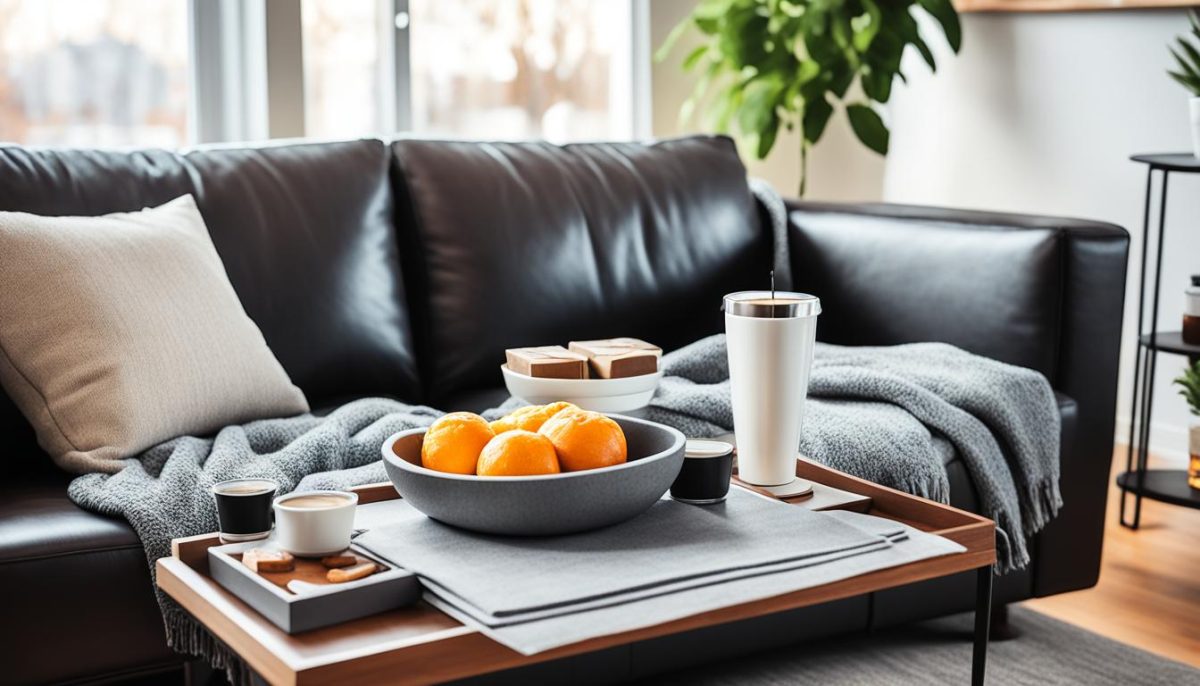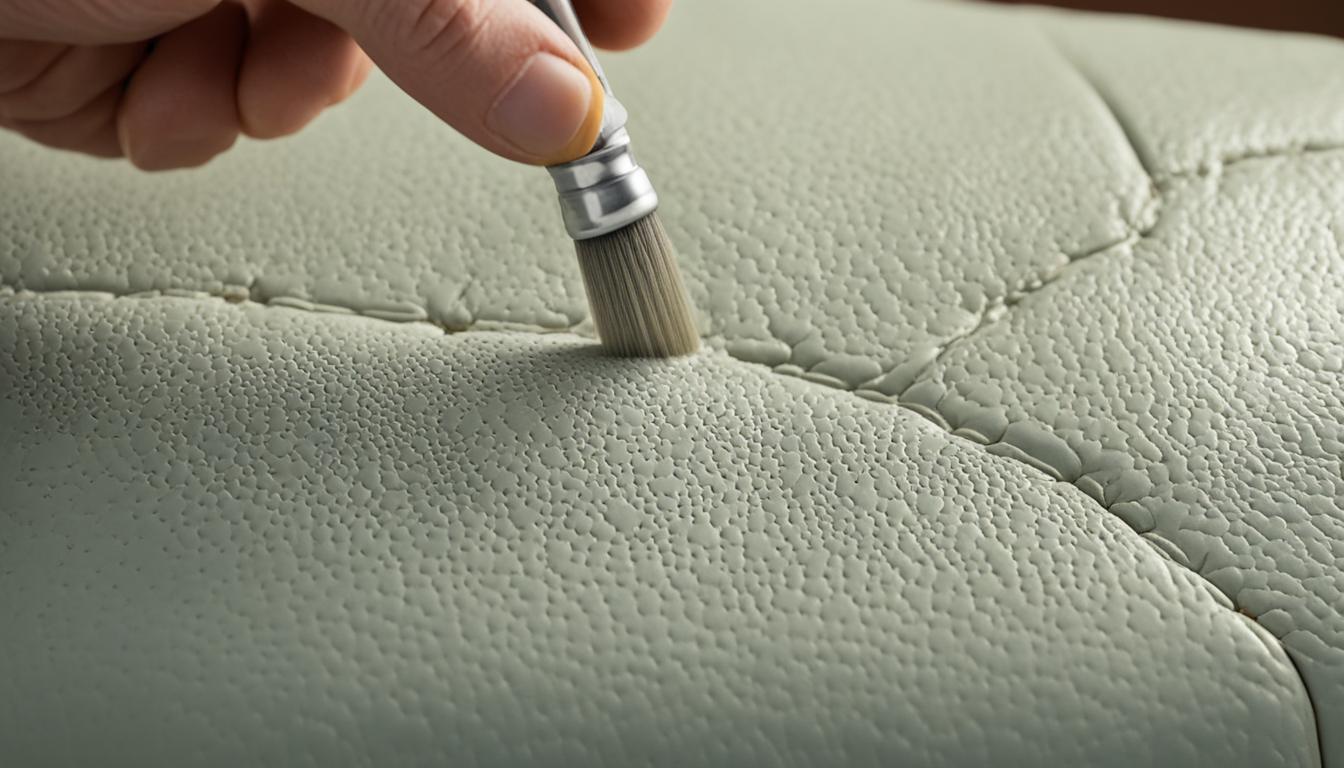Welcome to our comprehensive guide on how to repair and restore your leather couch at home. If your beautiful leather furniture has seen better days, don’t panic – with our expert tips and step-by-step instructions, you can bring it back to life and enjoy its luxurious comfort once again.
Whether you’re dealing with minor scratches and scuffs or major tears and rips, we’ve got you covered. Our guide will walk you through the process of assessing the damage, choosing the right repair method, and using the correct materials to ensure a successful restoration.
By following our proven techniques, you can not only repair your leather couch but also extend its lifespan and preserve its beauty for years to come. From minor touch-ups to more advanced repairs, we’ll provide you with the knowledge and tools you need to tackle any leather furniture challenge.
But that’s not all – we’ll also share essential tips on conditioning and protecting your leather couch. Proper care and maintenance are crucial to maintain its luxurious look and feel. Our guide will equip you with the knowledge of the best products and techniques to keep your leather furniture in top condition.
Ready to start reviving your leather couch? Let’s dive in and discover how you can repair, restore, and rejuvenate your beloved piece of furniture!
Assessing the Damage
Before you can begin repairing your leather couch, it’s important to assess the extent of the damage. By identifying the specific problems, you’ll be able to choose the right repair method and materials for a successful restoration.
Here are some common issues you might encounter when assessing the damage:
- Scratches: Scratches can be superficial or deep, depending on the severity.
- Tears: Tears occur when the leather is ripped or punctured.
- Fading: Fading happens when the leather color loses its vibrancy due to exposure to sunlight or other factors.
By understanding the specific problem, you’ll be able to determine the appropriate repair techniques. Some issues might require simple DIY methods, while others may call for professional assistance.
| Common Leather Problems | Identification |
|---|---|
| Scratches | Inspect the leather surface for visible marks or scratches. Light scratches may appear as shallow lines, while deep scratches can result in noticeable grooves or indentations. |
| Tears | Look for visible tears or punctures in the leather. Tears can vary in size and shape, from small holes to larger rips. |
| Fading | Examine the color consistency of the leather. Fading often manifests as uneven or lighter patches of color. |
By accurately assessing the damage, you can proceed with the appropriate repair techniques and materials, ensuring the best possible outcome for your leather couch.
Repairing Minor Scratches and Scuffs
Minor scratches and scuffs are common issues faced by leather couch owners. Fortunately, you can easily fix them using simple techniques. In this section, we’ll share expert tips and tricks to help you remove light scratches and scuffs from your leather furniture. Whether you prefer using common household items or specialized leather repair products, we have you covered. Follow our step-by-step instructions to achieve a smooth and polished finish on your leather couch.
Using Household Items
If you’re looking for a budget-friendly option, you can utilize items commonly found in your home to fix minor scratches and scuffs on your leather couch. Here are a few tried and tested methods:
- Warm Water: Dampen a clean cloth with warm water and gently rub the scratched area in circular motions. This can help diminish the appearance of shallow scratches.
- Vinegar and Olive Oil: Create a mixture of equal parts white vinegar and olive oil. Apply the solution to a cloth and gently buff the scratched surface. The vinegar helps clean the leather, while the olive oil moisturizes and conceals the scratches.
Specialized Leather Repair Products
If you prefer using products specifically designed for leather repair, there are numerous options available in the market. These products often come with step-by-step instructions, making the process even simpler. Here are a few popular choices:
- Leather Repair Kits: These kits typically include a variety of tools and materials, such as color-matching compounds, filler, and adhesive. They provide everything you need to fix minor scratches and scuffs on your leather couch.
- Leather Conditioner and Restorer: A good quality leather conditioner can help diminish the appearance of scratches and scuffs while restoring the leather’s natural luster. Simply apply the conditioner to the affected area and follow the product’s instructions.
Remember, it’s always a good idea to test any cleaning or repair method on a small, inconspicuous area of your leather couch first to ensure compatibility and avoid any damage.
After successfully fixing the minor scratches and scuffs on your leather couch, you’ll be amazed at the transformation. Your couch will regain its beauty and look as good as new. In the next section, we’ll guide you through restoring major tears and rips, ensuring your leather furniture remains in excellent condition for years to come.
Restoring Major Tears and Rips
If your leather couch has experienced significant tears or rips, it can be disheartening. But don’t worry, with the right techniques and guidance, you can restore it to its former glory without the need for expensive professional repairs. In this section, we’ll walk you through the process of fixing torn leather couches and repairing ripped leather furniture.
Before you begin the restoration process, assess the extent of the damage. Identify the size and location of the tears or rips on your leather couch. This will help determine the appropriate approach for repair and the materials you’ll need.
If the damage is minimal, you might be able to fix it yourself. Start by cleaning the area around the tear or rip with a mild leather cleaner. Then, apply a leather filler or adhesive to seal the damaged area. Use a leather repair kit for best results, following the instructions provided.
For larger tears or rips, patching the damaged area is necessary. Cut a leather patch slightly larger than the tear or rip and gently sand the edges to ensure a smooth fit. Apply a leather adhesive to the underside of the patch and press it firmly onto the damaged area, making sure it’s securely attached.
Once the patch is in place, use a specialized leather filler or compound to fill any gaps or unevenness. Smooth out the filler with a putty knife and allow it to dry completely. Then, sand the filled area until it’s level with the surrounding leather.
After the filler has dried and been sanded, it’s time to blend the repaired area with the rest of the leather. Apply a leather dye or colorant that matches your couch’s original shade. Use a sponge or brush to apply multiple thin layers, allowing each layer to dry before applying the next. This will ensure a seamless and natural-looking repair.
Once the dye has dried, condition the entire couch to restore its softness and prevent future damage. Apply a leather conditioner using a soft cloth, following the product instructions. Regular conditioning will keep your repaired leather couch looking beautiful for years to come.
Remember, if you’re unsure or uncomfortable with any step of the repair process, it’s best to consult a professional. They have the expertise and tools to handle more complex repairs and ensure a flawless outcome.
Conditioning and Protecting Your Leather Couch
Once you’ve successfully repaired your leather couch, it’s essential to maintain its beauty and longevity. Regular leather conditioning, proper cleaning techniques, and the use of recommended products are key to protecting your investment. By following our expert tips on leather care, you’ll be able to protect your repaired couch from future damage and enjoy its luxurious look and feel for years to come.
The Importance of Leather Couch Maintenance
Leather couches are a luxurious addition to any home, but they require regular maintenance to retain their elegance. Proper care not only keeps your leather couch looking its best but also extends its lifespan. Over time, without proper conditioning and protection, leather can become dry, cracked, and susceptible to damage.
Regularly conditioning your leather couch helps to replenish natural oils, keeping the leather soft, supple, and resistant to drying out. Additionally, conditioning creates a protective barrier that safeguards against spills, stains, and UV damage, maintaining the couch’s pristine appearance.
Recommended Products for Leather Furniture Care
Choosing the right products to care for your leather couch is crucial to ensure its long-term durability. Look for leather conditioners specifically formulated for furniture, as they contain the necessary ingredients to nourish and protect the leather without causing any damage.
When selecting a leather conditioner, opt for one that is free from harmful chemicals and additives, as these can harm the leather surface. It’s best to choose a product recommended by the manufacturer of your leather couch, as they will be familiar with the specific needs of their furniture.
Always test the conditioner on a small, inconspicuous area of the couch before applying it to the entire surface. This step helps to ensure that the conditioner does not cause any discoloration or adverse effects on your leather couch.
Proper Cleaning Techniques for Leather Couches
In addition to regular conditioning, proper cleaning techniques play a vital role in protecting your leather couch. Dust and dirt can settle on the surface of the leather, potentially causing scratches or discoloration. To prevent this, it’s recommended to dust your leather couch regularly using a soft, dry cloth or a vacuum cleaner with a soft brush attachment.
However, if your leather couch requires deeper cleaning, it’s essential to use a gentle leather cleaner. Avoid using harsh chemicals or abrasive cleaners, as they can damage the leather. Instead, opt for a pH-neutral leather cleaner that is suitable for your specific type of leather.
Gently apply the cleaner to a soft cloth and wipe down the couch in small, circular motions. Avoid saturating the leather with excessive moisture, as this can lead to water stains or damage. Once you have finished cleaning, ensure that the couch is completely dry before conditioning.
Protecting Your Leather Couch from Sunlight and Spills
Protecting your leather couch from direct sunlight is essential to prevent fading and drying out. Position your couch away from windows or use curtains or blinds to shield it from prolonged exposure to the sun’s rays. Additionally, consider using UV-protective window films to minimize the risk of damage from sunlight.
To prevent spills from staining your leather couch, it’s advisable to quickly wipe away any spills or stains with a soft, absorbent cloth. Avoid rubbing the stain, as this can spread it further into the leather. Instead, blot the stain gently to absorb as much liquid as possible.
Expert Tips for Leather Couch Maintenance
- Keep sharp objects away from your leather couch to prevent accidental scratches.
- Avoid placing your leather couch near heat sources, such as radiators or fireplaces, as this can cause the leather to dry out and crack.
- Use leather protectant sprays to add an extra layer of protection against spills and stains.
- Regularly fluff and rotate the cushions to distribute wear and maintain the couch’s overall appearance.
- If your leather couch gets wet, gently blot the excess moisture with a clean, dry cloth and allow it to air dry naturally. Avoid using heat sources to speed up the drying process, as this can damage the leather.
By following these expert tips and maintaining a regular leather care routine, you can protect your repaired leather couch and ensure that it remains a cherished centerpiece in your home for years to come.

Preventive Measures for Leather Couch Care
Preventing leather couch damage and caring for your furniture is essential for maintaining its beauty and extending its lifespan. By following these practical tips, you can keep your leather couch in pristine condition and avoid expensive repairs in the future.
One of the most important preventive measures is to protect your leather couch from direct sunlight. Prolonged exposure to the sun’s rays can cause fading, discoloration, and drying out of the leather. To prevent this, consider placing your couch away from windows or using curtains or blinds to block out sunlight during peak hours.
Proper placement is also crucial in preventing damage to your leather furniture. Avoid placing your couch near heat sources such as radiators, fireplaces, or vents. Heat can dry out the leather, causing it to crack and lose its natural elasticity. Additionally, keep sharp objects away from your couch to prevent accidental tears or scratches.
Regular maintenance is key to preserving the quality of your leather couch. Dusting or vacuuming your furniture weekly helps remove dirt and debris that can scratch or stain the leather. When cleaning, always use a mild leather cleaner specifically formulated for your type of leather. Avoid using harsh chemicals or abrasive cleaners as they can damage the leather’s surface.




